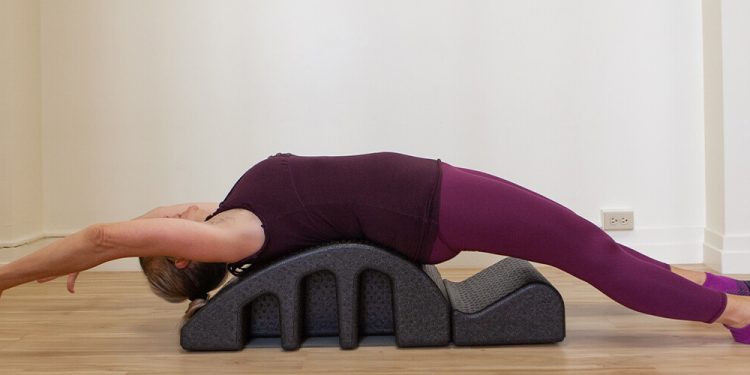Experiencing recurring pain issues or struggling with injury recovery? Your provider may suggest physical therapy to get your body moving freely again. And they might expressly incorporate Pilates techniques into your rehabilitation plan.
Keep reading for an in-depth look at what makes Pilates physical therapy so effective for resolving complex orthopedic and neuromuscular dysfunctions when traditional treatment falls short.
Pilates physical therapy, offered by Ironhorse Physical Therapy & Pilates in San Ramon, CA, seamlessly integrates the principles of Pilates with targeted therapeutic interventions
Table of Contents
What is Pilates and How Does It Work?
Pilates focuses on strengthening the body from the inside out through targeted conditioning exercises. Created by Joseph Pilates over 100 years ago, Pilates aims to balance strength with flexibility using controlled motions emphasizing precision.
The myriad of exercises integrates elements of strength training, physiotherapy stretches, yoga, gymnastics, and calisthenics. But Pilates principles take these methods to an entirely different level.
Core Principles of the Pilates Methodology
All Pilates work derives from several foundational principles:
Centering and Neutral Spine Alignment
Every movement originates from a stabilized core, engaging transverse abdominals to maintain a neutral pelvis and lengthened spine. This takes the pressure off discs and facilitates optimal positioning of the scapulae and shoulder girdle.
A strong center lets movement flow freely from hips, shoulders, and extremities, unencumbered by instability or torque forces on joints.
Breath Initiation Enhancing Thoracic Mobility
In Pilates, breath facilitates movement. Full controlled inhalations and long complete exhalations set the tempo while fully circulating oxygen.
The focus expands transverse thoracic expansion, engaging supportive back musculature. This counteracts compression and poor posture. Proper respiratory patterns also govern the autonomic nervous system toward deeper relaxation.
Precision and Control
Pilates prioritizes quality over quantity and proper alignment over range of motion. The mind consciously guides the body to recruit specific muscle groups while avoiding compensation.
Great care is taken not to overload joints or reinforce bad movement habits. Instead, unilateral, asymmetric exercises train body awareness and fine neuromuscular control.
Flowing Coordination
Targeted strengthening builds a base for more flowing, coordinated sequences linking stability with mobility. Controlled multi-planar movements challenge dynamic balance, proprioception, spatial orientation, rhythm, and motor planning. Physical therapists adapt and progress integrative exercises based on capabilities.
Gradual Progressive Loading
Layering incrementally more complex postures, resistance, speed, range of motion, and coordination provides just the right dose of optimal challenge without overstressing tissues. Progressions carefully and methodically rebuild capability, control, and confidence.
Benefits of Regular Practice
Regular Pilates physical therapy yields cumulative benefits such as improved spinal alignment, increased back and core muscle strength, enhanced energy levels, improved joint mobility, corrected muscle imbalances, reduced stress and low back pain, advanced body awareness, and more efficient movement patterns.
This holistic approach translates into improved well-being, increased confidence, and an ability to stay active without the interference of pain in daily life.
Why Pilates Complements Physical Therapy
Regular Pilates physical therapy offers cumulative benefits, including enhanced spinal alignment, increased back and core strength, improved activity tolerance, greater shoulder and hip mobility, corrected muscle imbalances, reduced stress and low back pain, advanced body awareness, and more efficient movement patterns.
These collective improvements contribute to an overall sense of well-being, increased confidence, and the ability to stay active without the hindrance of pain in daily life.
Applications for Different Physical Therapy Diagnoses
Numerous orthopedic and neurological conditions respond favorably to Pilates physical therapy, including:
- Chronic low back pain – Multifidus strengthening, lumbar and pelvic stabilization
- Disc pathology – Spinal decompression, core engagement without flexion stresses
- Sacroiliac joint dysfunction – Pelvic and hip control in functional patterns
- Shoulder instability – Rotator cuff and scapular muscle retraining
- Osteoarthritis – Active range of motion, proprioception, muscle conditioning around joints
- Total joint replacements – Progressive strength and load tolerance, movement control
- Balance impairments – Controlled perturbations improve reflexes and ankle proprioception
- Peripheral neuropathies – Reduce compression, enhance neural dynamics
- Postural dysfunctions – Reshape muscle recruitment sequences
Pilates in San Ramon CA also helps replenish the nervous system, enhance mind-body connection, reduce anxiety, and rebuild confidence in using the body after injury or surgery. This facilitates the transition back to normal activity and life roles.
Choosing a Qualified Pilates PT Specialist
Ensure your Pilates instructor has specialized San Ramon physical therapy training to properly apply the intricate Pilates system toward therapeutic goals. A board-certified Pilates physical therapist possesses rigorous education in:
- Functional anatomy
- Pathology and diagnostics
- Biomechanics
- Custom therapeutic exercise prescription
- Musculoskeletal rehabilitation concepts
This enables them to appropriately progress with Pilates techniques while evaluating outcomes to guide clinical decision-making. A Pilates PT specialist understands how to grade exercises and modify programs based on disease stage, healing status, age, and fitness level.
Integrating Pilates into Your PT Plan
In San Ramon, CA, the skilled physical therapists at Ironhorse Physical Therapy & Pilates undergo rigorous training in Pilates rehabilitation concepts and practical instruction methodology. Whether recovering from injury, managing arthritis, or preventing falls, their tailored Pilates physical therapy programs help achieve health and fitness goals.
By integrating Pilates principles into care plans, Ironhorse Physical Therapy & Pilates empowers clients to maintain strength and mobility, ensuring long-term movement resilience. Contact them today to discover the lasting benefits of Pilates physical therapy.


 Home
Home










